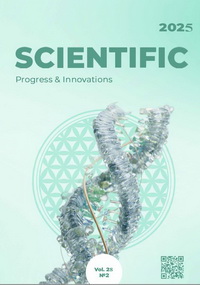Effect of plant density and fertilization on winter rapeseed yield
DOI:
https://doi.org/10.31210/spi2025.28.02.09Keywords:
Cicer arietinum L., phytopathogens, phytosanitary risk, ascochyta blight, fusarium wilt, disease epidemiologyAbstract
The aim of this review was to assess the impact of climate change on the distribution and phytopathogenic pressure of chickpea (Cicer arietinum L.) diseases under the agroclimatic conditions of the Forest-Steppe zone of Ukraine. Statistical data analysis revealed significant fluctuations in chickpea cultivation areas and a notable shift in production from the Steppe to the Forest-Steppe zone over the past decade. The expansion of chickpea cultivation into new agroclimatic zones has increased phytosanitary risks associated with local pathogenic organisms. The plant’s vulnerability to diseases is largely determined by its developmental stage, climatic conditions, and physiological state, which collectively influence the likelihood of disease outbreaks and potential yield losses. In the Forest-Steppe zone of Ukraine, phytopathogenic fungi of the genera Fusarium and Ascochyta remain the most damaging, significantly reducing crop productivity. Concurrently, climate change is facilitating the spread of new pathogens, including rust, Macrophomina blight, Alternaria leaf spot, and viral infections, necessitating enhanced phytosanitary monitoring and the adaptation of disease management strategies. Particular attention is given to the emerging threat of Pea necrotic yellow dwarf virus, which has already been detected in several European countries, including Germany. Rising annual mean air temperatures, changes in precipitation patterns, and the increasing frequency of extreme weather events have altered the epidemiology of major chickpea pathogens. Observed trends include an increased number of pathogen generations, a shift in periods of peak disease activity, prolonged plant infection periods, and the appearance of atypical disease symptoms, complicating field diagnostics. The resulting disruption of the "plant-pathogen-environment" system leads to heightened phytopathogenic pressure. In this context, the study underscores the need to adapt existing chickpea cultivation technologies to new climate realities by improving agronomic practices, implementing systematic phytosanitary monitoring, and integrating modern plant protection measures.
Downloads
Published
How to Cite
Issue
Section
License
Copyright (c) 2025 Scientific Progress & Innovations

This work is licensed under a Creative Commons Attribution 4.0 International License.

 Creative Commons Attribution 4.0 International Licens
Creative Commons Attribution 4.0 International Licens